
As Israel celebrates 74 years of independence, we take a look at the bizarre debates, events and even architecture that marked its earliest days.
Israel is celebrating 74 years of independence on May 5 this year. The passage of time and the solemn black-and-white photos of the period give one the feeling that the nascent country’s first footsteps were orderly, well-thought-out affairs. In reality, things couldn’t be more different: the country’s very name was hotly debated, the Declaration of Independence wasn’t ready on time and a state emblem was yet to be found.
Below are eight fun and fascinating facts surrounding Israel’s founding, proving that the country’s famous atmosphere of balagan (chaos) and resourcefulness has been here right from the start. Happy holiday!
1. 1948 wasn’t actually the first time a government was declared
It’s common knowledge that the State of Israel was founded in 1948, but few know that some people tried to bring it about five years earlier. In 1943, when World War II was still raging, veteran Zionist leaders convened a large public meeting in Ramat Gan called “The People’s Congregation,” from which a temporary Jewish government would be elected. As the National Library of Israel’s “The Librarians” blog recalls in detail, nothing momentous came of all those lengthy speeches. Still, they tried.
2. The country’s name wasn’t an obvious choice
Israel, by the way, was the name suggested by the country’s first prime minister, David Ben-Gurion.
3. The famous independence declaration backdrop? Rather makeshift.
Israel’s independence was solemnly declared at the entrance of what was back then the Tel Aviv Museum. The famous photos show long drapes, Israeli flags, a portrait of Zionist visionary Theodor Herzl and serious-looking men assembled on stage and on chairs in front of them. The drapes, it appears, were hung to hide the nude paintings on the walls.
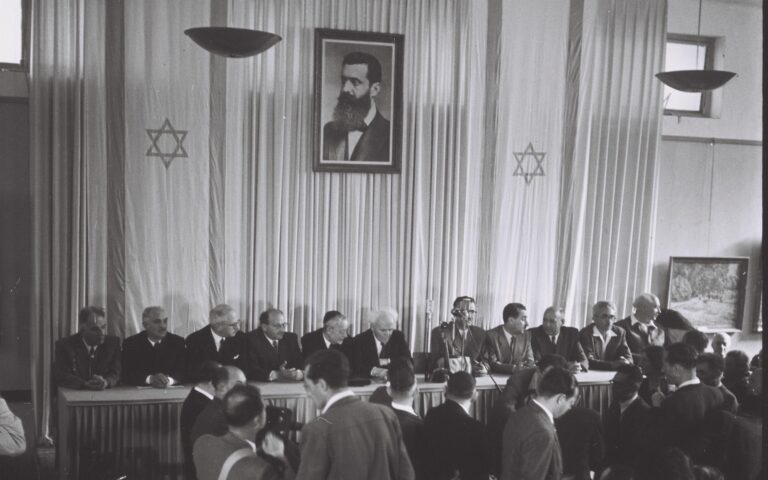
The chairs were taken from surrounding cafés, and the portrait of Herzl and the flags were borrowed from the United Israel Appeal because the decorating budget didn’t quite stretch to purchasing them. The whole thing took 24 hours to put together, but the results ended up looking absolutely timeless.
4. The signatories to the Declaration of Independence didn’t in fact sign it
Israel’s Declaration of Independence, aside from being a canonical text, is a beautiful work of painstaking calligraphy. So painstaking, that was it wasn’t completely ready in time for the signing ceremony. As a result, its signatories did not add their names to the bottom of the text, but rather to a piece of parchment that was later sewn by its designer’s wife into the complete scroll.
Ben-Gurion, in case you were wondering, read the text from a plain typewritten piece of paper to which he added some handwritten notes.
5. The first flag flown in Jerusalem was colored with crayons
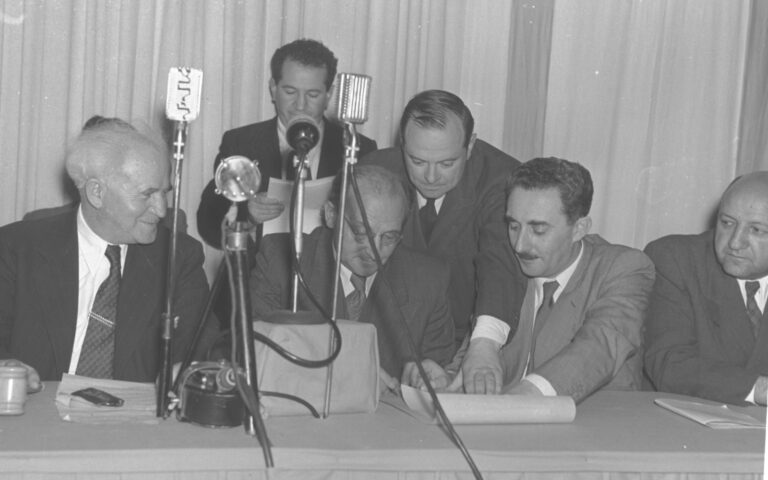
Rebecca Affachiner was a true trailblazer, becoming one of the leading Zionist figures of the early twentieth century and dedicating her life to the Jewish community and Zionist cause. Among her remarkable achievements was the fun fact that she flew the first Israeli flag in Jerusalem on May 14, 1948, following the announcement of the establishment of the state. Resourceful woman that she was, she sewed the flag herself and used simple blue crayons to color in its Star of David and stripes. Ingenious.
6. The government invited the public to design the state emblem, then rejected hundreds of proposals
Creating a state emblem is no easy task, and one which needs to take into consideration design, history and functionality. Shortly after the foundation of Israel, the new government invited the public to submit proposals, specifying that the said emblem must feature a seven-lamp candelabra, seven stars and the colors blue and white.
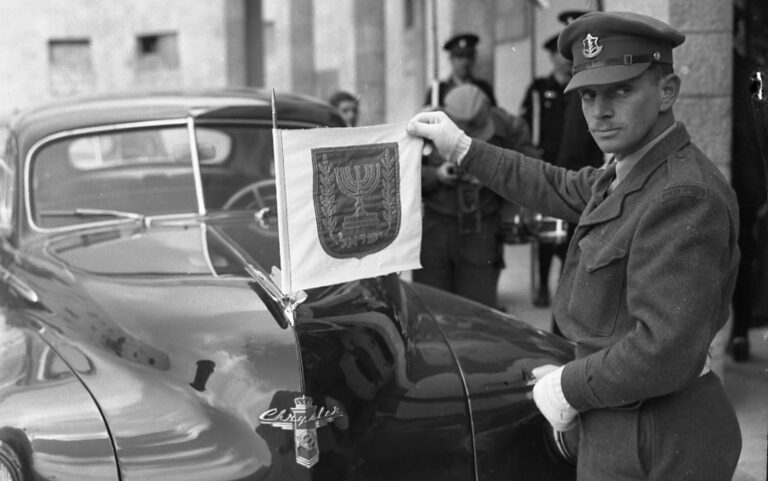
Dutiful artists sent in 450 proposals, and eventually a design by Gavriel and Maxim Shamir of Shamir Brothers Studio made the cut. Their drawing included a modern-looking candelabra and stars alongside olive branches but was later changed to feature the candelabra from the Arch of Titus in Rome and the word “Israel.” The stars were dropped, and the result is what we see on lapel pins and coins everywhere.
7. Tel Aviv’s first annual Independence Day parade failed to march
In Israel’s first two decades, a military parade took place every year as part of Independence Day celebrations. But in 1949, a year after the state was founded, things didn’t quite take off as planned. The parade started out alright, but soon the overenthusiastic crowd in Tel Aviv’s streets blocked it from proceeding any further.
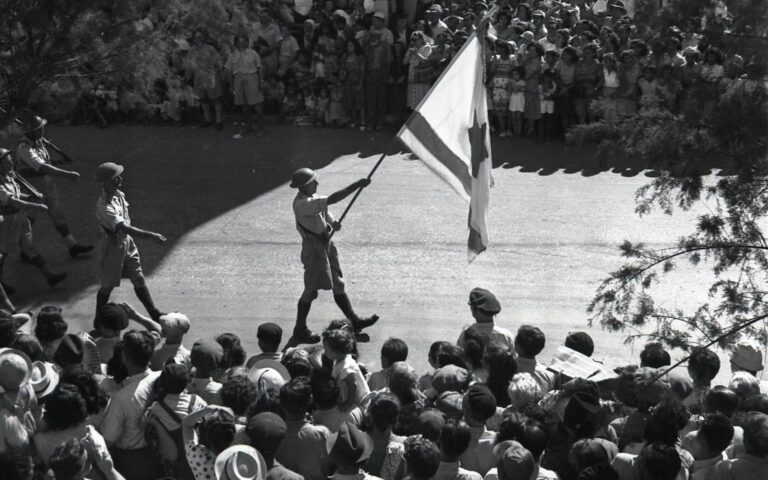
The sham was viewed as highly embarrassing and led one newspaper editor to wonder how the same army that had just a year earlier managed to defend the whole country failed to make it across a simple street.
8. Israel’s first Knesset met in a movie theater
The Knesset, or house of parliament, is a true landmark here in Israel, with its majestic architecture, sculptures and famous glass-stained windows. But the legislative assembly’s first home, bizarrely enough, was none other than a grand movie theater in Tel Aviv called Kessem (“Magic”) Cinema.
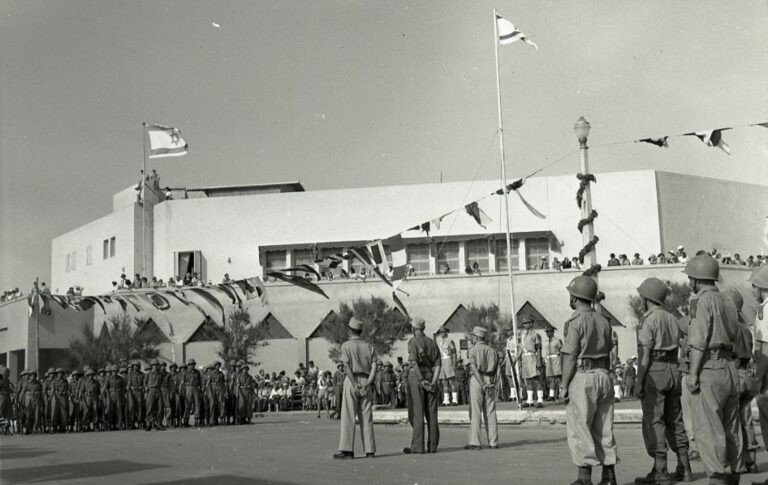
The huge building, constructed in 1945, boasted more than 1,000 upholstered seats and enjoyed a fabulous seaside location. For most of 1949 it hosted Israel’s first parliamentarians until they moved to Jerusalem. In later years, the building was used by tax authority officials and the Israeli opera house. It was then torn down and rebuilt as a residential building with quite a history.
This article was first published by Israel21c.